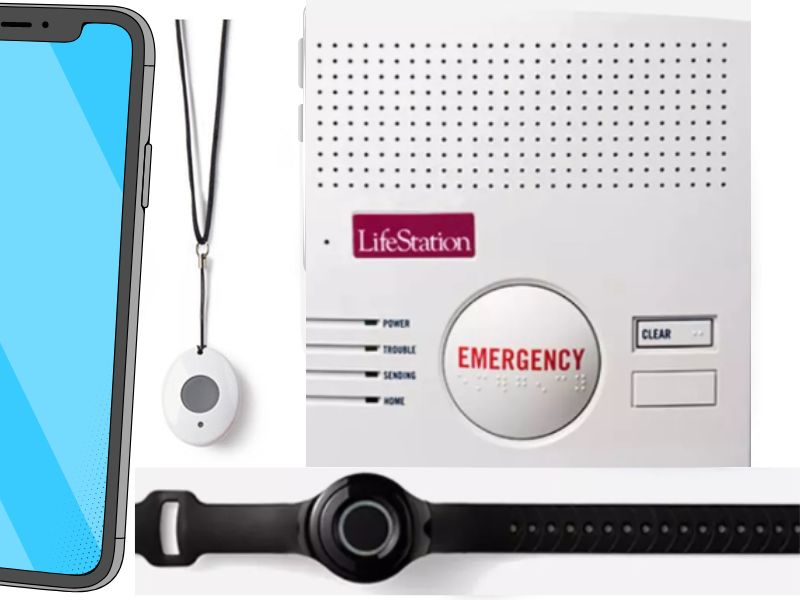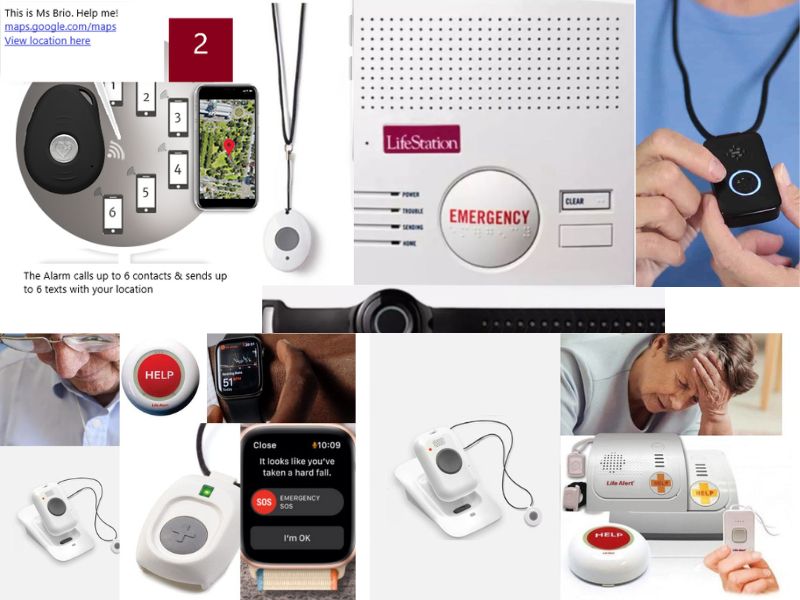How Do Medical Alert Systems Work?
Medical alert systems are devices designed to provide peace of mind and security to seniors and individuals with medical conditions who live independently. These systems typically consist of a wearable device, such as a pendant or wristband, that can be activated in case of an emergency. When the device is activated, it sends a signal to a base unit, which then contacts a monitoring center staffed by trained professionals.

The operator assesses the situation and contacts the appropriate emergency responders or designated contacts. The best medical alert systems also offer additional features, such as fall detection, medication reminders, and GPS tracking. By providing a quick and reliable way to get help when it is needed most, medical alert systems can help individuals maintain their independence and age in place with confidence.
What is a Medical Alert System?
A medical alert system is a device worn on the body or placed in the home to provide immediate access to emergency services in case of an accident or medical emergency. Typically, these devices consist of a small, portable button or pendant worn around the neck or wrist.
When pressed, the button sends a signal to a base station connected to the user’s home phone line or cellular network. The base station then contacts a monitoring center, where trained operators can assess the situation and dispatch emergency services if necessary.
MEDICAL ALERT SYSTEMS INNER WORKINGS
Medical alert systems provide a quick and easy way for users to call for help in an emergency. Beyond calling for help there are medical alert systems that call family. When a user activates the device by pressing the button or pendant, it sends a signal to the base station, which contacts the monitoring center. The monitoring center is staffed 24/7 by trained operators who can assess the situation and dispatch emergency services if necessary.
Types of Medical Alert Systems
Several different types of medical alert systems are available, each with its own features and benefits. Here are some of the most common types:
In-Home Medical Alert Systems
These systems are designed for home use and are typically connected to a landline phone. They can include base stations, wireless pendants or wristbands, and voice-activated speakerphone units. Click here if you want to know more about what an at-home medical alert system is.
Mobile Medical Alert Systems

These systems are designed to be used on the go and can include GPS tracking and fall detection features. They typically use cellular networks to connect to the monitoring center. Sometimes known as an on the go medical alert system click if you want to learn more of what an on-the-go medical alert system is.
Fall Detection Systems
These systems use sensors to detect when the user has fallen and automatically send a signal to the monitoring center.
Medical Alert Watches
These devices are worn like traditional watches and can include features like heart rate monitoring and medication reminders. Can Apple Watch be used as a medical alert? Great Question! The short answer…It depends. We dive deep into using an apple watch in the above article.
Medical Alert Apps
These apps can be downloaded onto a smartphone or tablet, including features like medication reminders and emergency calls.
Benefits of Medical Alert Systems
Medical alert systems offer several benefits, including:
- Peace of Mind: Knowing that help is just a button press away can provide peace of mind for the user and their loved ones.
- Increased Independence: Medical alert systems can help users maintain their independence by providing a way to call for help when they need it.
- Rapid Emergency Response: With 24/7 monitoring and quick access to emergency services, medical alert systems can help ensure that users receive rapid medical attention when they need it most.
- Customizable Features: Many medical alert systems offer customizable features, such as medication reminders and fall detection, that can be tailored to the user’s individual needs.
Frequently Asked Questions
Do Medical Alert Systems Require a Landline?
In the past, most in-home medical alert systems required a landline phone connection to work. This was because the systems used a landline to communicate with the monitoring center in case of an emergency. However, with technological advances, many medical alert systems also offer cellular options.
These systems use cellular networks to communicate with the monitoring center, eliminating the need for a landline connection. Cellular medical alert systems can be a great option for those who don’t have a landline or who want the added security of a backup communication option in case their landline goes down.
Do Medical Alert Systems Require Wi-Fi?
Some mobile medical alert systems require Wi-Fi, while others use cellular networks. Wi-Fi-connected medical alert systems are typically designed for in-home use and rely on a Wi-Fi connection to communicate with the monitoring center. This means that the system will only work within the range of the Wi-Fi signal.
On the other hand, cellular medical alert systems don’t require Wi-Fi and can be used anywhere with cellular coverage. These systems are ideal for those who are frequently on the go or who don’t have a reliable Wi-Fi connection at home.
Can Medical Alert Systems Detect Falls?
Many medical alert systems offer fall detection features that automatically signal the monitoring center if a fall is detected. These systems use sensors to detect sudden movements or changes in position that may indicate a fall.
If a fall is detected, the system will automatically send an alert to the monitoring center, and help will be dispatched if needed. Fall detection can be especially useful for seniors who may be at a higher risk of falls or who may not be able to reach the help button in time.
Do Medical Alert Systems Work Outside of the Home?
Yes, many medical alert systems work outside the home as long as cellular coverage exists. Some systems come with a mobile device that can be taken with the user wherever they go, while others require the user to have a mobile phone.
It’s important to check with the provider to ensure that the system will work outside the home and in the specific areas where the user will be traveling.
Conclusion

Medical alert systems provide peace of mind to seniors and their loved ones, knowing that help is just a button press away in an emergency. These systems come with various features such as fall detection, GPS tracking, and automatic fall detection, which can help seniors feel safer and more independent.
Families can choose the best system for their loved one’s needs and lifestyles by understanding how these systems work and what features are available.
